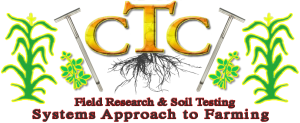[vc_row][vc_column][vc_raw_html]JTNDaWZyYW1lJTIwc3JjJTNEJTI3aHR0cHMlM0ElMkYlMkZwb2RvbWF0aWMuY29tJTJGZW1iZWQlMkZodG1sNSUyRmVwaXNvZGUlMkY4NTg0ODMxJTNGYXV0b3BsYXklM0R0cnVlJTI3JTIwaGVpZ2h0JTNEJTI3MjA4JTI3JTIwd2lkdGglM0QlMjc3MjglMjdmcmFtZWJvcmRlciUzRCUyNzAlMjclMjBtYXJnaW5oZWlnaHQlM0QlMjcwJTI3JTIwbWFyZ2lud2lkdGglM0QlMjcwJTI3JTIwc2Nyb2xsaW5nJTNEJTI3bm8lMjclMjBhbGxvd2Z1bGxzY3JlZW4lM0UlM0MlMkZpZnJhbWUlM0U=[/vc_raw_html][/vc_column][/vc_row][vc_row][vc_column][vc_column_text]Ken relays what growers across our growing area are projecting for how far along harvest is in their area. He also gives some yield results for fields that had shown Dicamba damage this year as well as a word of caution on yield monitor results when going through tougher cutting spots in beans. Ken also warns about slowing down the combine to minimize harvest loss and an increase in rootworm pressure. His final piece of advice is to not to take the current standability for granted and keep an eye on how your fields are faring.[/vc_column_text][/vc_column][/vc_row][vc_row][vc_column][vc_column_text]This Dicamba drifted field ended up yielding 1 bushel more than the field that it was anchored to.[/vc_column_text][vc_single_image image=”7038″ img_size=”full” onclick=”img_link_large”][/vc_column][/vc_row]
